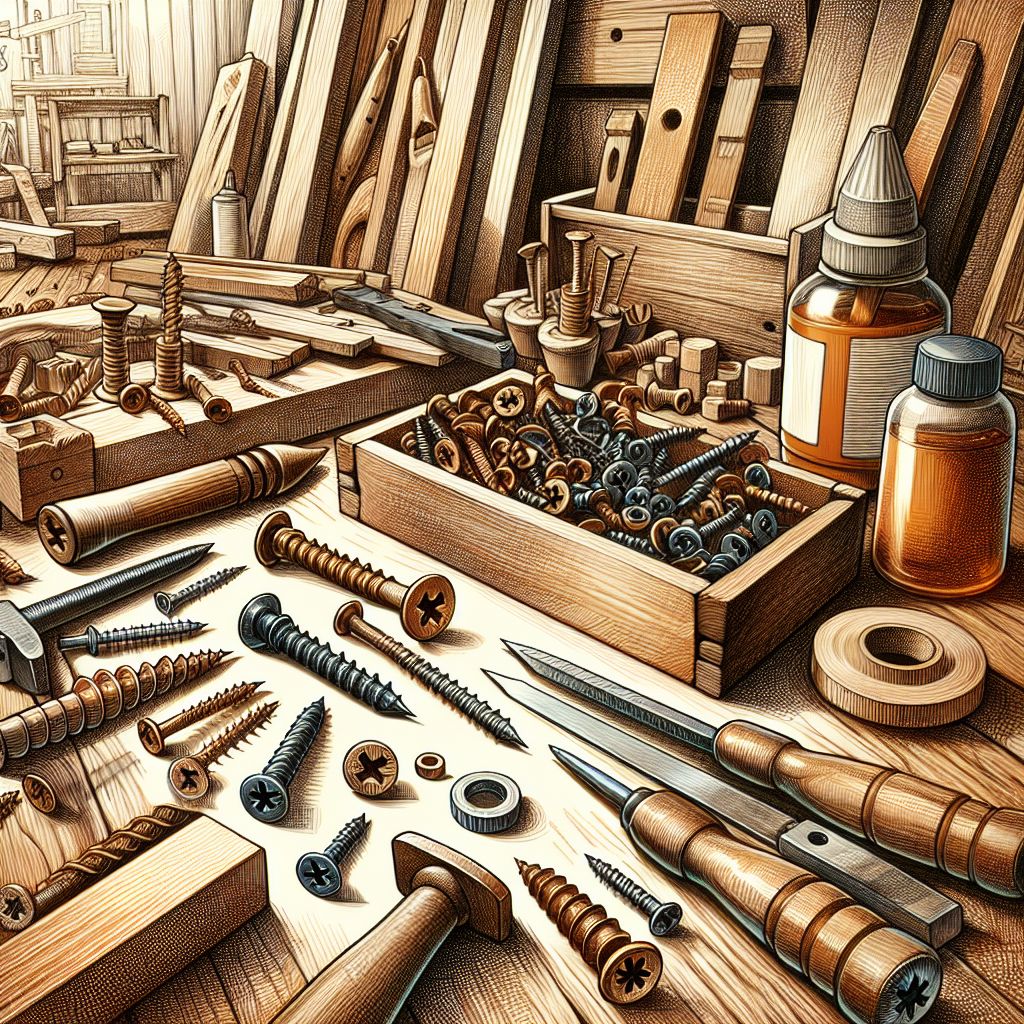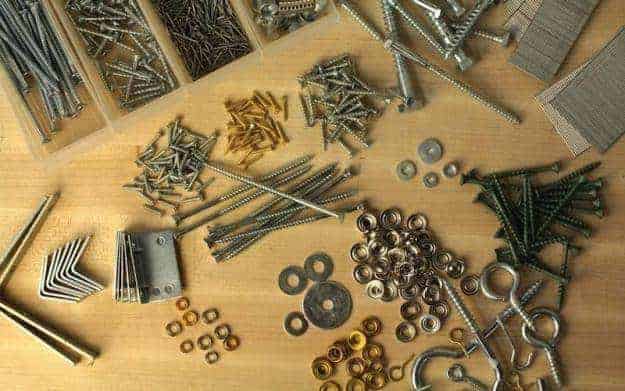Top Woodworking Fasteners: Types, Uses & Buying Guide For Beginners
Key Takeaways
- Understanding the basics of woodworking fasteners is essential for sturdy and durable projects.
- Different types of fasteners serve various purposes – from nails and screws to bolts and anchors.
- Choosing the right fastener depends on material, project location, and the desired finish.
- Proper preparation and application techniques can prevent common fastening issues.
- Investing in quality fasteners can enhance the longevity and appearance of your woodworking projects.
Unlock the Potential of Your Woodworking Projects
When you’re just starting out in woodworking, it might seem like the big power tools get all the attention. But, let me tell you, the real magic often lies in the little details – the fasteners. These small yet mighty components hold everything together, quite literally. So, understanding how to choose and use them is a game-changer for ensuring your projects are not only beautiful but also structurally sound.
Fasteners: The Unsung Heroes of Woodworking
Fasteners might not be the most glamorous part of woodworking, but they are undoubtedly one of the most crucial. Think of them as the glue that keeps the skeleton of your project intact. They come in all shapes and sizes, each with its own set of strengths for specific tasks. Nails, screws, bolts, and anchors – they all have a role to play in your woodworking symphony.
Let’s dive into the world of fasteners and learn how to select and apply them like a pro. Whether you’re piecing together a simple box or crafting a complex piece of furniture, the right fastener can make all the difference.
Woodworking Fasteners: More Than Just Nails and Screws
Most folks think of nails and screws when they hear ‘fasteners’, and while they’re the most commonly used, there’s a whole universe of options out there. Each type of fastener is designed for a specific purpose, and using the right one can be the difference between a project that lasts for years and one that falls apart the moment it’s touched.
Diving into the World of Woodworking Fasteners
Before you start hammering away, take a moment to consider the vast array of fasteners at your disposal. It’s not just about what you have lying around; it’s about what’s best for the job. You wouldn’t use a thumbtack to hold up a heavy picture frame, right? Similarly, choosing a fastener for your woodworking project requires a bit of thought.
Choosing the Right Fastener for the Job
First things first, let’s talk materials. Are you joining two pieces of softwood, hardwood, or maybe attaching wood to metal? The density and characteristics of your materials will dictate the type of fastener you need. And then there’s location – will your project live indoors away from the elements, or will it brave the outdoors? This will determine whether you need something that can stand up to moisture and temperature changes.
And let’s not forget about the finish. Do you want the fasteners to be visible for a rustic look, or would you prefer them to be hidden for a sleek, modern finish? These decisions will guide you towards the right fastener and ensure your project turns out just the way you envisioned it.
The Role of Fasteners in Woodworking Integrity
Choosing the right fastener is not just about aesthetics; it’s also about integrity. The right fastener will hold your project together under stress and over time. It’s about creating something that’s not only pleasing to the eye but also structurally sound. Whether it’s a load-bearing shelf or a decorative frame, the integrity of your work is paramount.
Remember, woodworking is as much about precision and planning as it is about creativity. By understanding the role of each type of fastener, you’re setting yourself up for success. And success in woodworking? Well, that’s a feeling like no other.
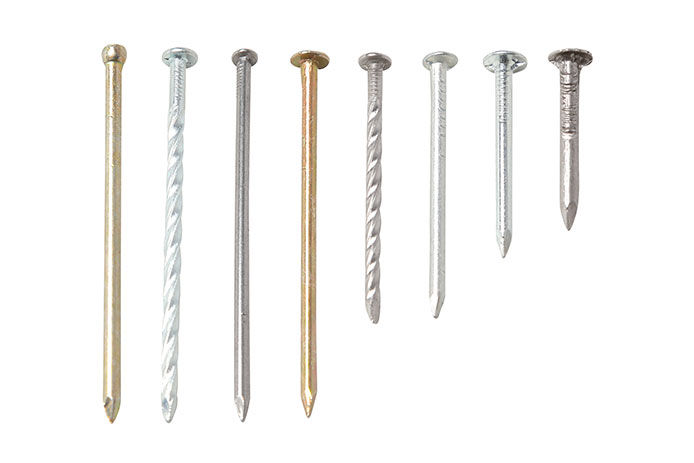
“Different Types of Nails and How to Use …” from www.doitbest.com and used with no modifications.
Nails: Not All Created Equal
When it comes to nails, size and type do matter. A finishing nail is not the same as a framing nail, for instance. Finishing nails have small heads and are used when you don’t want the nail to show, like in trim or molding. Framing nails, on the other hand, have larger heads and are used for structural work where strength is crucial. Always choose a nail that’s long enough to penetrate at least half the thickness of the bottom material for a solid hold.
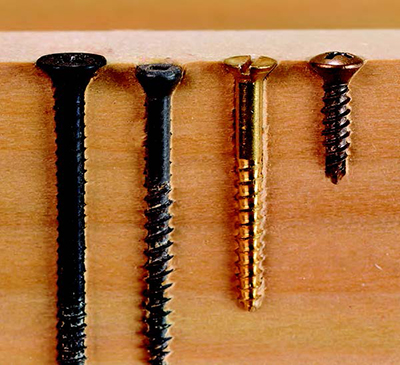
“Choosing the best wood screw for projects” from www.woodworkersjournal.com and used with no modifications.
Screws: The Turn That Binds
Screws are the go-to fastener for most woodworking projects because they provide a stronger hold than nails and can be removed more easily if you make a mistake. But not all screws are the same. You have wood screws, sheet metal screws, and even machine screws. Wood screws are your best bet for most projects; they have sharp points and threads that are designed to grip the wood and hold tight.
When using screws, it’s important to drill pilot holes to prevent the wood from splitting. The size of the pilot hole should be slightly smaller than the diameter of the screw for a snug fit. And remember, the length of the screw should be such that it goes through the top material and at least halfway into the bottom material.
Exploring Other Fastener Options
Besides nails and screws, there are other fasteners that might be just what you need for your project. Dowels, for example, are great for creating strong joints in furniture. Then there are bolts and nuts, which are ideal for situations where you need a removable joint or when you’re working with metal. And let’s not forget about anchors – these are a must-have when you’re attaching something heavy to a wall, especially if it’s drywall.
Getting Hands-On: Using Fasteners Effectively
Now that you know about the different types of fasteners, it’s time to get hands-on. But before you start hammering or drilling, you need to understand how to use these fasteners effectively. This means knowing not only where to place them but also how to prepare your materials and apply the fasteners properly.
Prepping Your Work Pieces
Preparation is key. Make sure your workpieces are cut to the exact size and are smooth and free of any debris. If you’re screwing into wood, always drill a pilot hole. This will help to guide the screw and prevent the wood from splitting. If you’re nailing, consider using a nail set to finish driving the nail below the surface of the wood for a cleaner look.
Fastener Application Techniques
Applying fasteners correctly will ensure they do their job. For nails, use a hammer that’s the right size for the job – too big, and you could damage your workpiece; too small, and you might not get enough force. When screwing, use the correct type of screwdriver or drill bit to avoid stripping the screw head. And always drive screws perpendicular to the surface for the strongest hold.
Troubleshooting Common Fastener Issues
Even with careful planning, issues can arise. If a screw won’t go in, it might be because the pilot hole is too small or you’re using the wrong type of screw for the material. If a nail bends while you’re hammering it, this could be a sign that the wood is too hard or the nail is too thin. When these issues pop up, take a step back and assess what might be going wrong. Sometimes, simply switching to a different size or type of fastener can make all the difference.
Buying Guide: Selecting the Best Fasteners for Woodworking
With so many options available, selecting the best fasteners for your woodworking projects can be daunting. But it doesn’t have to be. Keep in mind the material you’re working with, the location of the project, and the desired finish when making your selection.
Quality Counts: What to Look for in a Fastener
Always opt for quality fasteners. Cheap ones might save you a few pennies now, but they can compromise the integrity of your project in the long run. Look for fasteners made from durable materials, like stainless steel or coated with a corrosion-resistant finish if they’ll be exposed to moisture.
Fasteners and Wood Types: A Match Made in Heaven
The type of wood you’re working with will also affect your choice of fasteners. Softwoods are more forgiving and can usually take nails and screws without much preparation. Hardwoods, on the other hand, require pre-drilled pilot holes to avoid splitting. And for the strongest hold, consider using glue along with your fasteners.
For example, when joining two pieces of oak, a strong hardwood, use wood glue and screws. Drill pilot holes to prevent splitting and ensure the screws are long enough to penetrate and hold both pieces securely.
Now, where can you find these woodworking wonders? You can buy fasteners at your local hardware store, home improvement centers, or online. When shopping, don’t hesitate to ask for advice on the best fasteners for your project. And don’t forget to check reviews and ratings if you’re purchasing online.
Where to Buy Woodworking Fasteners
When it comes to buying fasteners, you have plenty of options. Local hardware stores often have knowledgeable staff who can help guide you to the right choice. Big box home improvement stores offer a wide selection and the convenience of online shopping. And specialty woodworking shops are a treasure trove of high-quality fasteners for those more intricate projects.
Remember, the right fastener can make or break your woodworking project. Take the time to choose wisely, and your creations will not only look great but will stand the test of time.
Enhancing your woodworking projects with the right fasteners isn’t just about durability; it’s also about the finished look. The choice of fastener can influence the aesthetics of your piece as much as the wood you select or the finish you apply.
Finish Strong: Aesthetics and Fasteners
Consider the end result you’re aiming for. Do you want the fasteners to stand out as part of the design, or would you prefer they remain invisible? Using brass screws can add a touch of elegance to a project, while pocket hole joinery allows screws to be hidden for a seamless look. The finish of your fastener—be it shiny, matte, or even antique—can complement your project’s style.
And it’s not just screws and nails that affect the look of your project. Joinery choices like dovetails or mortise-and-tenon joints can be both functional and decorative. Sometimes, the strongest joint is one that’s also the most visually appealing.
Maintenance and Longevity: Caring for Your Joined Pieces
Once your project is complete, it’s important to maintain it properly to ensure its longevity. This includes taking care of the fasteners. If you’ve used iron or steel fasteners, they might rust over time, especially in humid environments. You can prevent this by choosing galvanized or stainless steel fasteners, or by applying a protective coating.
Regularly check your fasteners to make sure they haven’t loosened over time, especially in pieces that bear weight or are used frequently. Tightening screws or replacing old nails can help keep your project sturdy for years to come.
Remember, the fasteners you choose are as much a part of your project as the wood itself. They need to be treated with the same care and consideration to ensure that your work remains both beautiful and functional throughout its life.
For ideas and quick and easy woodworking projects, tap here.
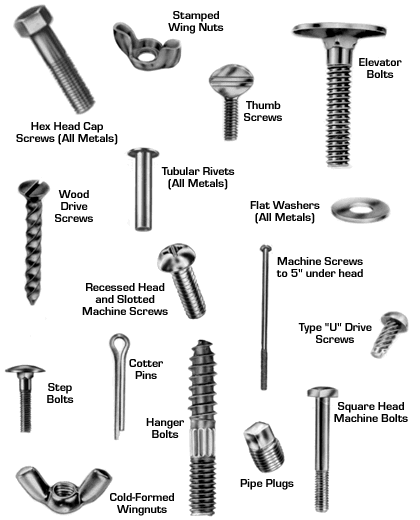
“OEP – Standard Fasteners & Locknuts” from www.oep.com and used with no modifications.
FAQ On Woodworking Fasteners
1. What Makes a Fastener Suitable for Outdoor Projects?
Outdoor projects require fasteners that can withstand the elements. Look for fasteners labeled as ‘exterior’ or ‘outdoor’ grade. These are usually made from stainless steel, galvanized steel, or coated with a weather-resistant material. These materials prevent rust and corrosion, which is vital for the longevity of your outdoor projects.
Most importantly, consider the specific conditions your project will face. If you live in a coastal area, for example, the salt in the air can be highly corrosive, so you’ll need fasteners that are specifically designed to resist this type of environment.
For instance, stainless steel is often recommended for outdoor furniture due to its resistance to rust and corrosion. However, in coastal areas, even stainless steel can corrode, so you might need to look for marine-grade fasteners.
2. Can I Reuse Fasteners for Different Projects?
Reusing fasteners can be cost-effective, but it’s important to assess their condition first. If a screw or nail is bent, rusted, or has a worn head, it’s better to replace it. A compromised fastener can affect the structural integrity of your project. However, if they’re still in good shape, there’s no reason why you can’t reuse them.
3. Are Expensive Fasteners Always Better?
Not necessarily. While it’s true that you often get what you pay for, the most expensive option isn’t always the best choice for every project. The key is to find a fastener that is appropriate for the material, environment, and stress that will be placed on it. Sometimes, a mid-range priced fastener will do the job just as well as the most expensive one.
4. How Do I Choose the Right Size Fastener?
Choosing the right size fastener is crucial. As a rule of thumb, a fastener should enter at least half the thickness of the bottom material for a secure hold. For screws, measure the thickness of the top material you’re attaching and add this to the half-thickness of the bottom material to find the minimum length of screw you should use. For a detailed explanation, refer to this guide to woodworking screws.
5. Is There a Universal Type of Woodworking Fastener?
No, there isn’t a one-size-fits-all fastener for woodworking. The diversity in materials, project types, and environmental conditions means that you’ll need to choose the most appropriate fastener for each specific situation. Always consider the specific requirements of your project and choose accordingly.
6. Where can I learn more about woodworking and ideas for projects?
Here’s a great place to learn more about woodworking and ideas for projects.
By understanding the various types of fasteners and their applications, you’re well on your way to creating woodworking projects that are not only strong and durable but also visually stunning. Remember to take your time in selecting the right fastener—it’s a small component that can have a big impact on your final creation.
For ideas and quick and easy woodworking projects, tap here.
